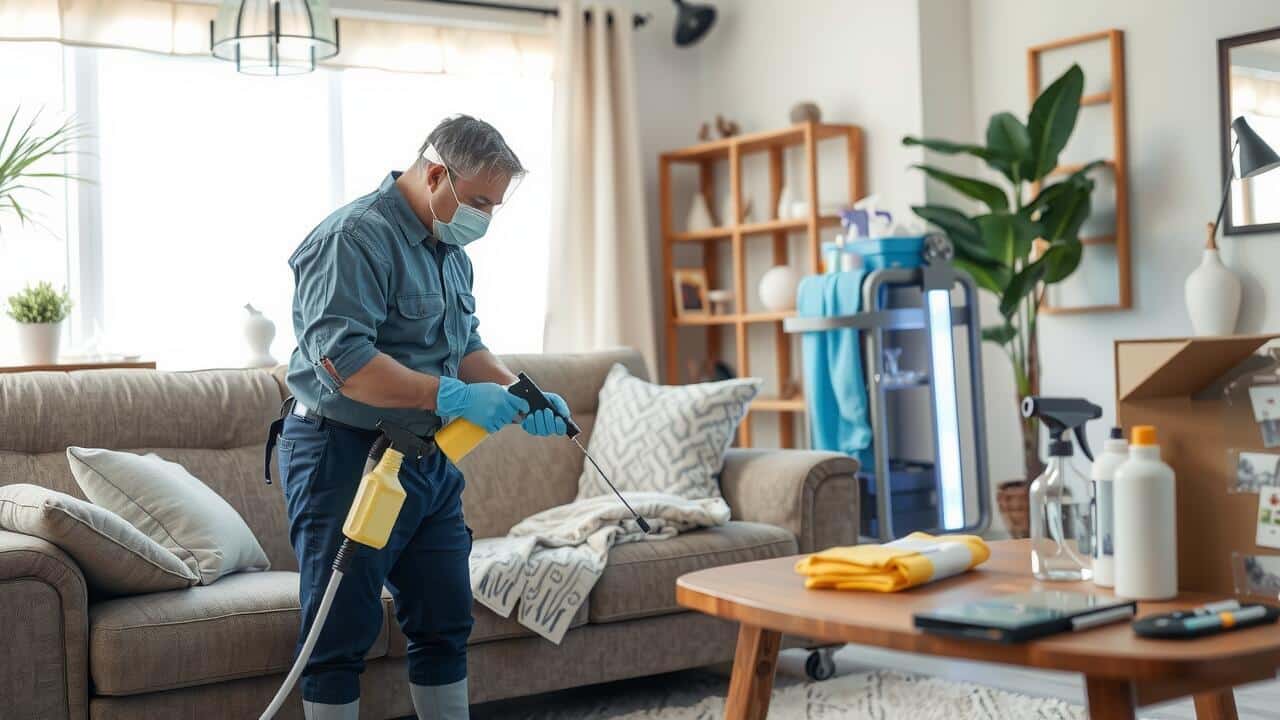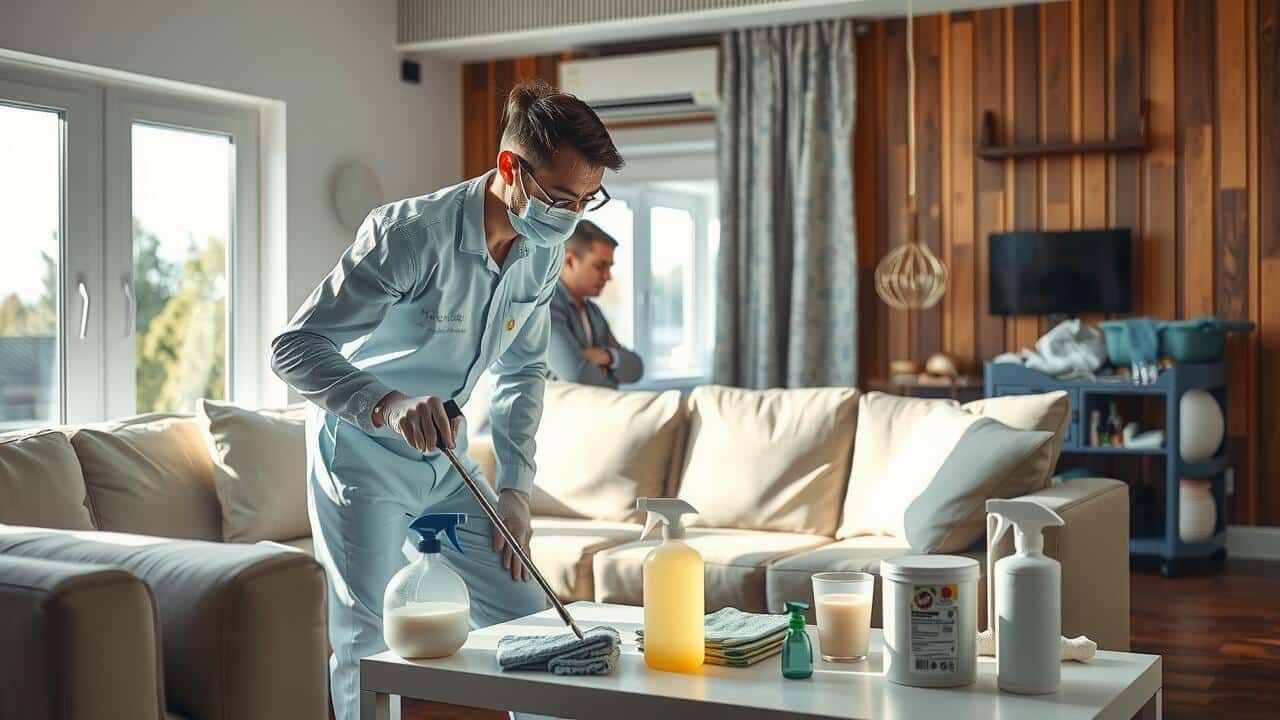
Table Of Contents
Cleaning Bathrooms Thoroughly
Cleaning bathrooms after illness requires a systematic approach. Start with surfaces that are frequently touched, such as doorknobs, faucet handles, and light switches. Use disinfectant wipes or spray to thoroughly clean these areas. Pay special attention to the toilet, sink, and shower. These fixtures can harbor a high level of germs, making them essential targets in your home sanitizing process.
After addressing high-touch surfaces, move on to larger areas like countertops, mirrors, and floors. Use a strong disinfectant that is suitable for the materials in your bathroom. Make sure to follow the instructions on the product label for optimal effectiveness. Regular cleaning and disinfecting play a crucial role in preventing the spread of germs, ensuring a healthier environment for all occupants of the home.
Targeting Germ-Prone Spots
When focusing on germ-prone spots in the house, attention should be directed to high-touch surfaces. Doorknobs, light switches, and handrails often harbor germs, making them essential areas to clean during home sanitizing. A disinfectant recommended by health authorities can effectively eliminate pathogens. Ensure to wipe these surfaces thoroughly, allowing the product to sit for the recommended time to maximize its efficacy.
Another critical area to consider is the kitchen. Countertops, cabinet handles, and faucet handles frequently come into contact with hands and food items, creating an environment conducive to germ spread. During home sanitizing, it’s vital to use a reliable cleaner suitable for food surfaces. This not only disinfects but also helps maintain a safe cooking environment. Regularly addressing these germ-prone spots will significantly reduce the risk of illness in the household.
Dealing with Soft Surfaces
Dealing with soft surfaces requires a careful approach to ensure that germs are effectively removed. Fabrics like curtains, upholstered furniture, and throw pillows can harbor pathogens even after a person has recovered from illness. To properly disinfect these areas, start by checking labels for any specific cleaning instructions. Washing machine-safe items can be laundered using hot water and a bleach solution if appropriate, while dry cleaning may be necessary for more delicate fabrics.
For items that cannot be laundered, using a fabric-safe disinfectant spray can be effective. Apply the spray generously on the surface and allow it to fully dry to ensure maximum germ-killing efficacy. Regular vacuuming can also help reduce allergens and bacteria in soft furnishings. Incorporating these practices into your home sanitizing routine will contribute to a healthier environment, particularly after illness has affected your household.
Approaches for Fabrics and Upholstery
Fabrics and upholstery can harbor germs and viruses, making them essential to address during home sanitizing. Begin by checking the labels on cushions and curtains for cleaning instructions. Upholstery can often be vacuumed to remove dust and debris. For deeper cleaning, consider using steam cleaners designed for fabric, which can kill pathogens without the use of harsh chemicals. Washing removable fabric covers according to the manufacturer’s guidelines also helps ensure a thorough disinfection.
When it comes to softer surfaces like carpets and rugs, regular vacuuming is important, but additional treatment may be necessary after illness. Utilize a carpet cleaner or hire professional services that employ steam cleaning methods. This approach can significantly reduce bacteria and viruses. For items that cannot be washed, consider using disinfectant sprays deemed safe for upholstery, ensuring they do not damage the material. Keeping these areas clean contributes significantly to a healthy living environment during home sanitizing efforts.
Maintaining Ventilation During Disinfection
Maintaining proper ventilation during the disinfection process is crucial for effective home sanitizing. Opening windows and doors can help dilute and dissipate airborne germs. Fresh air reduces the concentration of potentially harmful substances that may be released from cleaning products and disinfectants. This circulation allows any lingering odors or chemical residues to escape, creating a safer environment for future occupants.
Utilizing fans can further enhance airflow throughout the space. Ensuring that air circulates effectively helps remove particulate matter and pathogens from the air. It also speeds up the drying time of cleaned surfaces, contributing to overall effectiveness in the disinfection process. Prioritizing ventilation not only aids in home sanitizing but also promotes a healthier living space moving forward.
Importance of Fresh Air Circulation
Fresh air circulation plays a crucial role in the home sanitizing process, especially after illness. Allowing outdoor air to flow through the house helps dilute and disperse airborne germs and viruses. Open windows and doors to create cross-ventilation, which can reduce the concentration of contaminants inside. This simple act aids in creating a healthier indoor environment, supporting the overall disinfection efforts.
Additionally, maintaining good airflow helps eliminate any lingering odors associated with illness. Airborne particles can become trapped in enclosed spaces, and proper ventilation can prevent this buildup. Fans can also be utilized to enhance circulation if outdoor conditions are not favorable. By prioritizing fresh air movement, homeowners can significantly improve the effectiveness of their sanitizing measures and foster a more welcoming atmosphere.
FAQS
What are the first steps to take when disinfecting a house after being sick?
Start by gathering cleaning supplies, including disinfectants, gloves, and cloths. Focus on high-touch areas like doorknobs, light switches, and remote controls, and ensure to wash any linens or towels used during illness.
How can I effectively disinfect my bathroom?
Use a disinfectant spray or wipes to clean surfaces such as sinks, faucets, toilet seats, and handles. Pay close attention to commonly touched areas and allow disinfectants to sit for the recommended contact time before wiping them away.
Are there special considerations for disinfecting soft surfaces like carpets and upholstery?
Yes, for soft surfaces, use an appropriate fabric-safe disinfectant spray. If possible, wash any removable covers and vacuum regularly. Steam cleaning can also be effective in killing germs.
How important is ventilation during the disinfection process?
Ventilation is crucial as it helps to reduce the concentration of airborne pathogens and improves the effectiveness of cleaning products. Open windows and doors to maintain fresh air circulation while you clean.
What disinfecting products are recommended for household use?
Look for EPA-registered disinfectants that are effective against viruses and bacteria. Common household items like bleach solutions, hydrogen peroxide, or alcohol-based wipes can also be effective, but always follow the manufacturer’s instructions for use.
